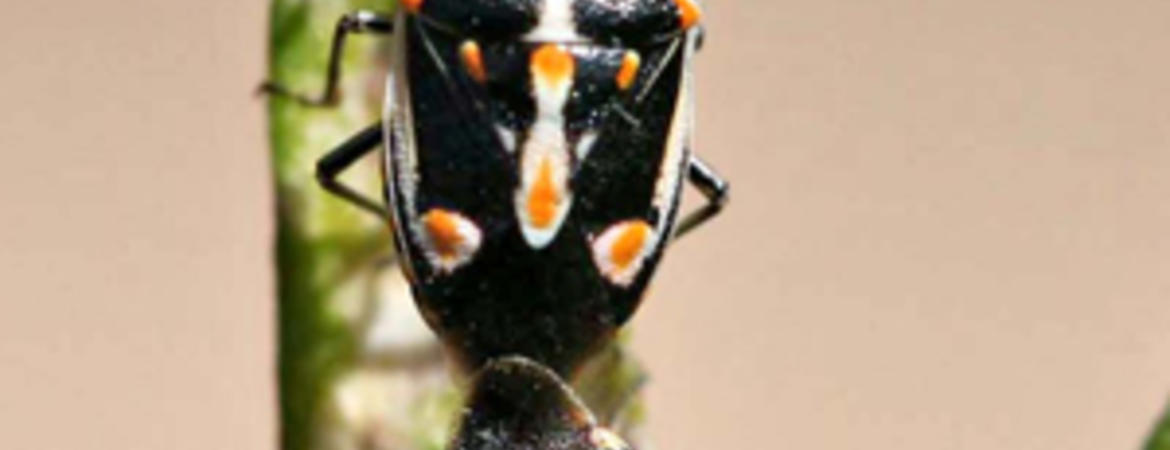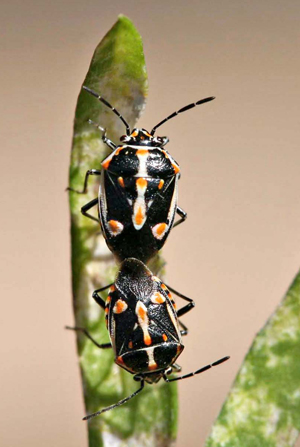
The Situation: The Bagrada bug (also called painted or harlequin bug) was first found in June 2008 in Los Angeles Co. California, and is now widely distributed in LA and Orange Counties. Establishment of Bagrada bug in California is a new USA and Western Hemisphere record.
Damage: Bagrada bug is a major pest of crop plants in the Brassicaceae (Cruciferae), which includes important foods like cabbage, kale, turnip, cauliflower, mustard, broccoli, and radish. The Bagrada bug has also been recorded attacking papaya, potato, maize, sorghum, cotton, capers, and some legumes. Damage is inflicted on host plants when adults and nymphs insert their needle-like mouth parts and suck juices from the plant. Feeding results in large stippled or wilted areas on leaves. Often the growth of newly formed central shoots or heads of plants become stunted. Populations can build up quickly reaching damaging densities that require control. Heaviest infestations are typically observed in organic farms, community gardens, and residential vegetable gardens were little or no pesticides are used. Local residents, not familiar with this new stink bug, often think they have beneficial lady bugs, because Bagrada adults and larger nymphs are about same the size and have a similar bright coloration.
Identification: Adult Bagrada bugs are 5-7 mm long, and have black, shield-shaped bodies with distinctive white and orange markings. Adult females are larger than males. Nymphs are wingless and pass through 5 instars or developmental stages. Over the course of shedding the exoskeleton and growing, the wings gradually develop. First instar Bagrada bugs have reddish-brown heads and thoraxes and bright red abdomens. Later instars become darker (adding black color to their body) and develop wing pads. Eggs are oval, creamy-white, and turn orange as they age. Females lay eggs in the soil beneath host plants, but may also oviposit on leaves. Usually all life stages are present together on plants and adults are commonly observed in copulation.
Distribution: Bagrada bug is found in East and Southern Africa, Egypt, Zaire and Senegal. The global distribution of this pest also includes southern Asia and southern Europe (Malta and Italy). This pest is only known from Southern California in the USA.
Research: Very little is known about the identity and impact of biological control agents, in particular parasitoids, that attack eggs, nymphs, and adult Bagrada bugs. Despite the importance of this pest in many countries the biology, ecology, and population dynamics of this insect are not very well understood. Some progress in Europe has been made on chemical communication between Bagrada bugs.
Want more? Go to the CISR website for more on the Bagrada Bug
